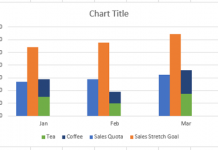Here is a Friday Challenge that a lot of Excel users may run into.
Essentially, you are given a date and incident type that occurred on that date. However, the user wants to take those columns of data and create a chart of cumulative incidents by date.
Here is the exact request:
“I currently have a table of various events that occurred and the associated date. How can I go about plotting a graph of the cumulative incidence of specific events over time? For example my table looks something like this:
| A | B | |
|---|---|---|
| 1 | ||
| 2 | Date | Incident Type |
| 3 | 6/4/2014 | A |
| 4 | 6/25/2014 | B |
| 5 | 7/1/2014 | C |
| 6 | 7/4/2014 | A |
| 7 | 7/4/2014 | A |
| 8 | 7/4/2014 | B |
| 9 | 8/8/2014 | C |
The Challenge
1) Copy the starting data from the table above to your Excel Worksheet and then create a Chart Data Range for the Cumulative Incidents by Date.
2) Create a Formula that can be used to to Easily create the cumulative values for new dates and new incidence types that may come our way.
3) Create a Chart that Best presents a) what the user wants and b) the chart data.
Good luck and send me a Contact Form request below if you want to share your success!
Steve=True




